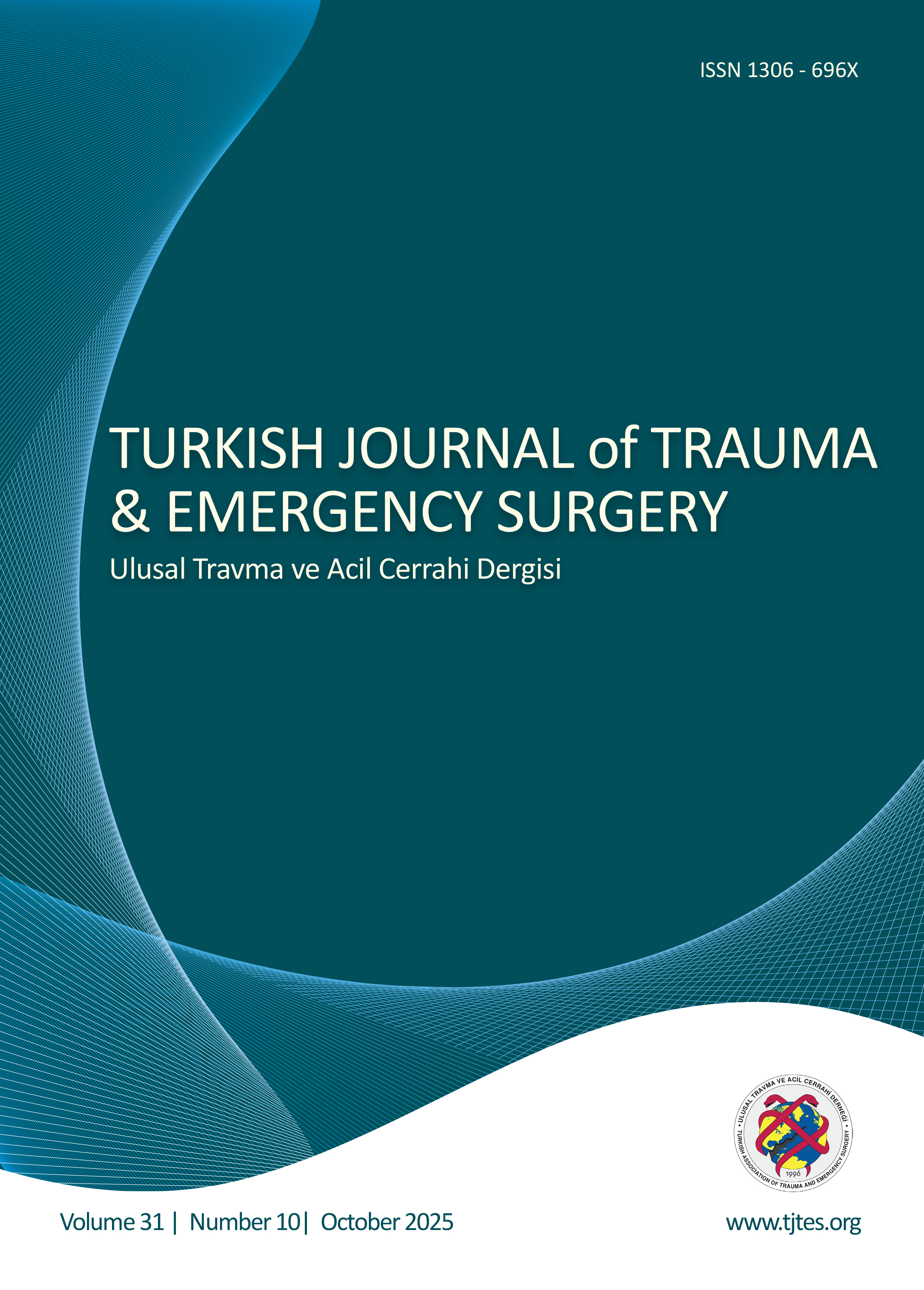Quick Search
A comparison of the minimally invasive and traditional lateral approaches for hemiarthroplasty following a femoral neck fracture shows reduced postoperative pain and fewer blood transfusions
Bülent Kılıç1, Süleyman Altun1, Melih Civan2, Sevan Sıvacıoğlu3, Fatih Şentürk1, Baran Heval Kömür4, Ergün Mendeş51Department of Orthopedics and Traumatology, Kanuni Sultan Suleyman Training And Research Hospital, University Of Health Sciences, Istanbul, Turkey2Department of Orthopedics and Traumatology, Cam Ve Sakura City Hospital, Istanbul, Turkey
3Orthopaedist, Private Physician, Istanbul, Turkey
4Department of Orthopedics and Traumatology, Gaziosmanpasa Training And Research Hospital, University Of Health Sciences, Istanbul, Turkey
5Department of Anaesthesiology, Koc University Hospital, Istanbul, Turkey
BACKGROUND: This study aimed to investigate the effects of the minimally invasive direct lateral approach applied by standart hip surgery instruments on operation duration, early postoperative pain, post op blood loss, and hospital stay in the treatment of femoral neck fractures treated with hemiarthroplasty (HA), compared to the standard Hardinge direct lateral approach named in the study as conventional group (CG).
METHODS: We retrospectively collected clinical data from the medical records of our hospital. The criteria for including selected patients were a diagnosis of femoral neck fractures resulting from low-energy trauma and treated with HA surgery. Patients were divided into two groups based on the surgical approach: the conventional group (CG) and the mini incision group (MG). Twenty-four patients comprised the MG (case group), while eighteen patients were in the CG (control group). The average wait time for surgery is 3.8 days for the MG and 3,6 days for the CG. Statistical analyses were conducted to evaluate differences in postoperative pain scores, hospital stays, post-operative blood infusion, operation duration, hemoglobin, and hematocrit levels between the groups.
RESULTS: Our study found no significant difference in age and gender distribution between the case and control groups (p>0.05). The average age of the mini incision group was 83,8 years, while the average age of the other group was 86,9 years. In both groups, the fracture types were equally Garden type III and IV. However, the visual analog scale (VAS) scores on the first and third postoperative days were significantly lower in the case group than in the CG group (p<0.05). Patients in the MG required significantly lower post-operative blood transfusions compared to the control group. Hospitalization duration, as well as hemoglobin and hematocrit levels both pre-operation and at discharge, were comparable between the groups.
CONCLUSION: The data from this study indicate that the mini incision technique is an effective and reliable method for treating femoral neck fractures. Compared to the conventional group, the minimally invasive direct lateral approach for femoral neck fractures significantly reduces postoperative pain in the early recovery period compared to the standard lateral approach, leading to less blood loss, better cosmetic outcomes, and a similar length of hospital stay. Clinical studies involving larger case numbers and assessing long-term postoperative outcomes are necessary.
Femoral boyun kırığı sonrası hemiartroplasti için minimal invaziv ve geleneksel lateral yaklaşımların karşılaştırılması, ameliyat sonrası ağrının azaldığını ve daha az kan transfüzyonu gerektiğini göstermektedir
Bülent Kılıç1, Süleyman Altun1, Melih Civan2, Sevan Sıvacıoğlu3, Fatih Şentürk1, Baran Heval Kömür4, Ergün Mendeş51Ortopedi Ve Travmatoloji Bölümü, Kanuni Sultan Süleyman Eğitim Ve Araştırma Hastanesi, Sağlık Bilimleri Üniversitesi, İstanbul, Türkiye2Ortopedi Ve Travmatoloji Bölümü, Çam Ve Sakura Şehir Hastanesi, İstanbul, Türkiye
3Ortopedi Uzmanı, Özel Muayenehane Hekimi, İstanbul, Türkiye
4Ortopedi Ve Travmatoloji Bölümü, Gaziosmanpaşa Eğitim Ve Araştırma Hastanesi, Sağlık Bilimleri Üniversitesi, İstanbul, Türkiye
5Anestezi Bölümü, Koç Üniversitesi Hastanesi, İstanbul, Türkiye
GİRİŞ: Bu çalışmanın amacı, hemiartroplasti (HA) ile tedavi edilen femoral boyun kırıklarının tedavisinde standart kalça cerrahisi aletleri ile uygulanan minimal invaziv direkt lateral yaklaşımın, çalışmada konvansiyonel grup (CG) olarak adlandırılan standart Hardinge direkt lateral yaklaşıma kıyasla operasyon süresi, erken postoperatif ağrı, postoperatif kan kaybı ve hastanede kalış süresi üzerindeki etkilerini araştırmaktır.
YÖNTEMLER: Hastanemizin tıbbi kayıtlarından klinik verileri retrospektif olarak topladık. Seçilen hastaları dahil etme kriterleri; düşük enerjili travmadan kaynaklanan femoral boyun kırığı tanısı almış ve HA cerrahisi ile tedavi edilmiş olmak. Hastalar cerrahi yaklaşıma göre iki gruba ayrıldı: konvansiyonel grup (CG) ve mini kesi grubu (MG). Yirmi dört hasta MG'yi (vaka grubu) oluştururken, on sekiz hasta CG'de (kontrol grubu) yer aldı. Ameliyat için ortalama bekleme süresi MG için 3,8 gün ve CG için 3,6 gündür. İstatistiksel analizler, gruplar arasında postoperatif ağrı skorları, hastanede kalış süreleri, postoperatif kan infüzyonu, operasyon süresi, hemoglobin ve hematokrit seviyelerindeki farklılıkları değerlendirmek için yürütüldü.
BULGULAR: Çalışmamızda vaka ve kontrol grupları arasında yaş ve cinsiyet dağılımında anlamlı bir fark bulunmadı (p>0,05). Mini kesi grubunun ortalama yaşı 83,8 yıl iken, diğer grubun ortalama yaşı 86,9 yıldı. Her iki grupta da kırık tipleri eşit olarak Garden tip III ve IV idi. Ancak, birinci ve üçüncü postoperatif günlerdeki görsel analog skala (VAS) skorları vaka grubunda CG grubuna göre anlamlı derecede düşüktü (p<0,05). MG' deki hastalar kontrol grubuna kıyasla anlamlı derecede daha az postoperatif kan transfüzyonuna ihtiyaç duydu. Hastanede kalış süresi, hemoglobin ve hematokrit seviyeleri hem operasyon öncesi hem de taburculuk sırasında gruplar arasında benzerdi.
SONUÇ: Bu çalışmadan elde edilen veriler, mini kesi tekniğinin femur boynu kırıklarının tedavisinde etkili ve güvenilir bir yöntem olduğunu göstermektedir. Geleneksel grupla karşılaştırıldığında; femur boyun kırıkları için minimal invaziv direkt lateral yaklaşım, standart lateral yaklaşıma kıyasla erken iyileşme döneminde postoperatif ağrıyı önemli ölçüde azaltır, daha az kan kaybına, daha iyi kozmetik sonuçlara ve benzer bir hastanede kalış süresine yol açar. Daha büyük vaka sayılarını içeren ve uzun vadeli postoperatif sonuçları değerlendiren klinik çalışmalar gereklidir.
Manuscript Language: English




